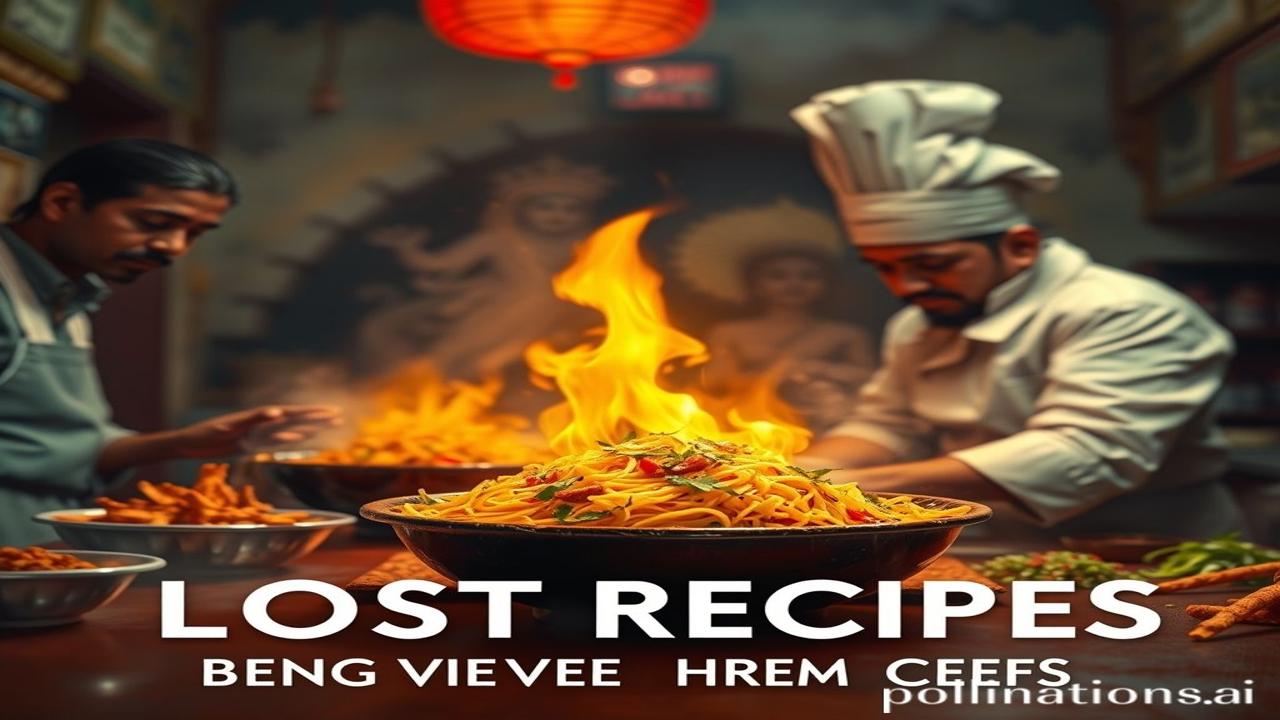Lost Recipes Being Revived by Home Chefs: Khushboo Purani, Zayka Naya
Kabhi socha hai, dadi maa ke haathon ki bani woh meethi roti, jiska zayka aaj bhi zubaan par tika hai, woh kahan kho gayi? Waqt ki dhool mein, kuch rasoi ke raaz, kuch recipes, aisi chhup gayi jaise raaton mein jugnu. Lekin, aaj kal, apne gharon mein baithe, kuch log unhi bhuli-bisri recipes ko phir se jeevant kar rahe hain. This is the story of lost recipes being revived by home chefs – a true taste of Bharatiyata.
Purane Zamaane Ka Khana: A Culinary Journey
What is this revival all about? It’s about rediscovering and recreating traditional Indian recipes that have been forgotten or lost over time. Think of age-old dals, unique vegetable preparations, or even specific styles of making rotis and sweets – recipes passed down through generations, often never written down, and now on the brink of disappearing.
Where did this come from? It’s a pan-Indian phenomenon, reflecting the incredible diversity of our culinary heritage. For centuries, Indian cuisine was a living, breathing tapestry woven by regional influences, family traditions, and the availability of local ingredients. Each state, each community, even each family had its own unique culinary identity.
Why is it important? Because these recipes are more than just food. They are a connection to our past, a tangible link to our ancestors, and a vital part of our cultural identity. They tell stories of resilience, resourcefulness, and the sheer joy of creating something delicious from simple ingredients. Losing them would be like losing a piece of ourselves. Think about it, these recipes have nurtured families, celebrated festivals, and marked important life events for generations. Woh dhrohar hai, ek shakti hai!
Ghar Ki Rasoi: Where Memories are Cooked
Imagine Ma Rukmini, centuries ago, carefully grinding spices in her mortar and pestle. The air filled with the aroma of cardamom and cloves, a fragrant symphony that promised a feast. She wasn’t just cooking; she was passing on her mother’s legacy, teaching her daughter the secrets of the family’s signature dal makhani.
Or picture a village farmer, harvesting rare varieties of rice and millets, ingredients for recipes so unique they could only be found in that specific region. These weren’t just farmers; they were guardians of culinary traditions, ensuring that the flavors of their ancestors lived on. “Beta, yeh chawal ka zayka toh swarg se kam nahi,” he might have said, handing a handful of the precious grains to his grandson.
Sadly, with urbanization, fast food, and changing lifestyles, these traditional recipes started to fade. The pressure of modern life meant less time for elaborate cooking, and the younger generation often didn’t learn (or didn’t care to learn) these complex culinary techniques.
Reviving the Past: Home Chefs as Culinary Archaeologists
Today, a new generation of home chefs is stepping up to preserve this vanishing culinary heritage. Armed with social media, online communities, and a passion for their roots, they are actively searching for and reviving lost recipes. They are culinary archaeologists, digging through family archives, interviewing elders, and experimenting in their kitchens to recreate the forgotten flavors of India.
They are not just copying recipes; they are understanding the stories behind them, the cultural significance, and the nutritional value of the ingredients used. “Mummyji, yeh toh kamaal hai! Yeh recipe toh mere par-nani ki diary mein mili,” exclaimed one young woman, proudly showing off a handwritten recipe for a long-forgotten chutney.
These home chefs are using platforms like Instagram and YouTube to share their discoveries, create online cooking classes, and build communities of like-minded food enthusiasts. They are making it cool to cook traditional Indian food and inspiring others to reconnect with their culinary heritage.
Aaj Ki Bharatiyata: Swad Mein Sanskruti
This revival has a profound impact on our understanding of Bharatiyata. It reminds us that Indian identity is not a monolithic entity but a vibrant mosaic of diverse cultures, traditions, and flavors. By celebrating these lost recipes, we are celebrating the richness and complexity of our heritage.
We see glimpses of this culinary revival in various forms: restaurants featuring regional cuisines, food festivals showcasing traditional dishes, and even cookbooks dedicated to preserving lost recipes. It’s a movement that connects us to our past and shapes our future, one delicious bite at a time.
Fun Fact: The Myth of “Dal-Roti is Boring”
Log samajhte hain ki dal-roti is a simple and boring meal. Lekin asli sach yeh hai that there are thousands of variations of dal and roti across India, each with its own unique flavor profile and nutritional benefits. From the creamy dal makhani of Punjab to the spicy toor dal of Gujarat, and from the simple roti to the flavorful missi roti, the possibilities are endless! It’s all about discovering the diversity within this seemingly simple combination.
Zayke Ki Tasveer: A Sensory Experience
Imagine the aroma of freshly ground spices filling your kitchen. The sound of sizzling mustard seeds in hot oil. The taste of a perfectly cooked roti, warm and slightly smoky. The feel of the soft dough between your fingers. The sight of a vibrant curry, bursting with colors and textures. This is the sensory experience of reviving lost recipes, a journey that engages all our senses and connects us to our roots.
Antim Vichar: Khana Ek Kavita Hai
“Annadaata sukhi bhava” – may the provider of food be blessed. This ancient Sanskrit saying reminds us of the importance of food, not just as sustenance, but as a source of nourishment, connection, and cultural identity. Let us continue to celebrate and preserve our culinary heritage, ensuring that the flavors of our past continue to inspire and enrich our lives for generations to come. After all, khana ek kavita hai, jo har baar nayi kahani sunati hai.
